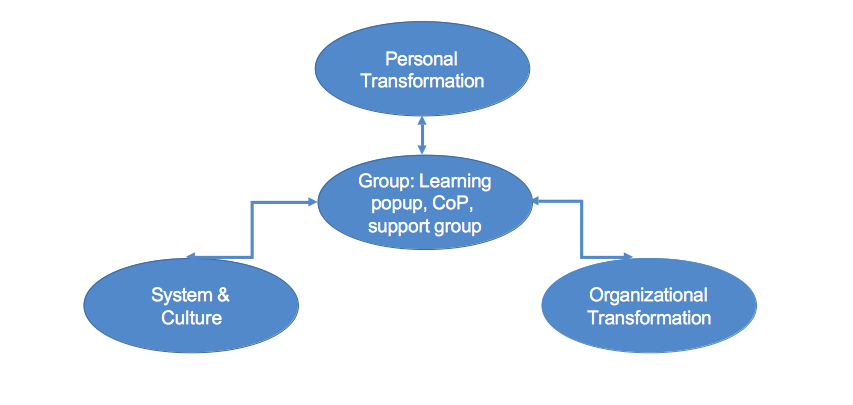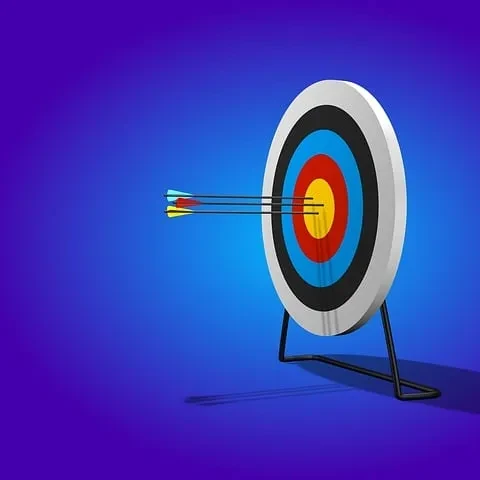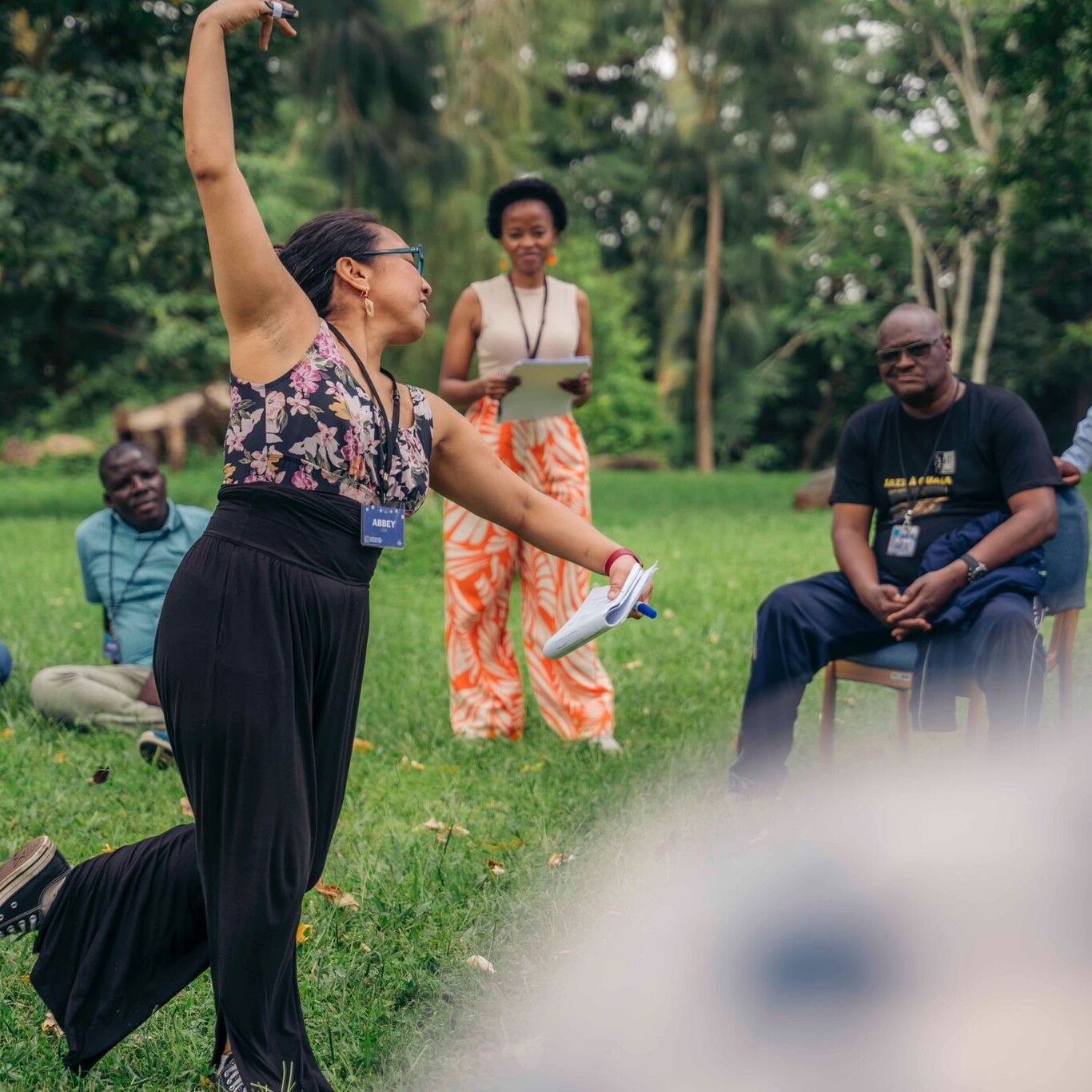by Ari Sahagún and June Holley
Co-Design Series Part 4
Most of you reading this post are involved in what are called social change efforts. We are working on social change because we want the world to be full of communities that are good for everyone. But the reality is that our communities are full of problems – poverty, drugs, intolerance, etc – and most of us are working diligently to try to crack open these problems and find solutions.
What is amazing is how little time we actually spend thinking about change – how it happens, how it can be supported, how to increase it and most importantly, how to make it transformative.
Increasing numbers of us know that what it is going to take is not simple incremental change but transformation – shifting the systems in which these problems are occurring.
Transformation means changing the way our society operates so that it reflects healthy values: this means that all our institutions, our processes, our interactions are open and transparent, inclusive and diverse, innovative and experimental, where power is equally distributed, and we work collaboratively together.
But transformation doesn’t just happen on the system level. Transformation needs to occur on every level: at the same time we are working to change institutions such as the prison system we need to be working on personal change and on organizational change.
Diagram 1. Groups help us change on other levels

If we don’t change as individuals – our mindset, the way we interact with others and who we interact with – we’re not going to be able to work well with others to shift the systems. And it’s only when we begin to interact with others who have different perspectives that we are able to see the hidden assumptions we have been making that have been keeping our efforts from leading to systemic change,
For example, if we are trying to develop strategies to end poverty and we don’t have any people who are actually living in poverty in the room with us figuring out the best way to address poverty, we will be unlikely to come up with solutions that will be more than a Band-Aid on the complex and massive problem that poverty represents.
And, we won’t get other people in the room with us unless we change and become better listeners, more open to new ideas, and more willing to let go of control.
Another example of why it’s so critical that we change as individuals is because our endless “to do lists” are holding us prisoners and keeping our work from being transformative. When June worked with people as an executive coach, they discovered that their to do lists were filled with items that were nonessential. These nonessentials distracted people from spending time on stepping back from their work as a whole. It’s only when people learn to scrutinize and prune their to do lists that they have time to reflect on what they’re really doing and notice what works and what isn’t. (see Worksheet: Freeing up your time for transformation Free in Resources Section)
What keeps us from changing? We need to become more aware of our behavior so that we remember to change. Personal assessments or checklists and then daily journaling are helpful tools for change. How can we encourage more people to incorporate these into their daily lives?
But let’s face it, change is hard to do alone. We need the support of others to help hold us accountable, listen to our challenges, and give us ideas for strategies. Small support groups or learning pop-ups are very beneficial for personal change, and they can support us as we work to change our organizations.
And, when we change ourselves, but don’t simultaneously help our organizations transform, we will continually run up against obstacles in our work. For example, many organizations see time spent on building relationships with those outside the organizations as a waste of time rather than an important step in network building and discourage or forbid their employees to network. Or, our manager insists on getting approval from her/him for the action steps we take in collaborative projects with other organizations, thus slowing down responses to opportunities that arise.
One of the best ways to change both ourselves and our organization is to be part of small groups where people help each other change. These can be support groups, learning pop-ups or communities of practice (monthly sessions where people share skills and provide support for each other around challenges that they face in getting their organizations to shift to a network mindset). In addition, working with others on self-organized projects related to our work can be a powerful way to shift behavior.
Networks can also set up friendly fun systems to enable us to identify where we want to change, help us get ideas for how we can change, and get feedback on those changes.
Read Part 1 of the Co-Design Series HERE
Read Part 2 of the Co-Design Series HERE
Read Part 3 of the Co-Design Series HERE



